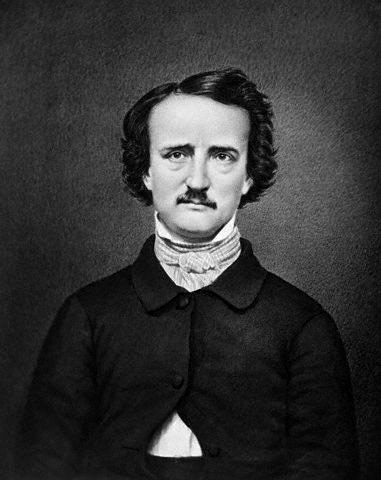
Happy Birthday Edgar Allan Poe, an American Literary Master!
A very happy birthday to Edgar Allan Poe who was born this day, January 19, in 1809.
For the past three years we have made the pilgrimage to Baltimore to stand at the gates of Westminster Hall and Burying Ground waiting for the famed, but mysterious, Poe Toaster to arrive. The Poe Toaster was a figure who would arrive at Poe’s gravesite in the very early hours of January 19th to leave a tribute of three red roses and a bottle of fine cognac at the author’s resting place. The three red roses are thought to represent Poe, his wife, and his aunt who are at rest side-by-side. Last year was the third year in a row the Poe Toaster failed to show, and like so many aspects of Poe’s life, and death, this tradition was officially ended by Jeff Jerome, the curator of the Baltimore Poe House and Museum. Speculation remains but to this day no one knows for certain who the Poe Toaster is, or was.
Life disrupted this year, as it can at times, and the Undertaker and I were unable to make it again to Baltimore to sing our dear Eddie Happy Birthday and to lay roses and a bottle of cognac at his grave. Other long-time Poe fans were thankfully at Eddie’s side. Even in death Poe is loved. His masterful works such as “The Raven,” “The Tell-Tale Heart,” “The Masque of the Red Death,” “The Pit and the Pendulum,” “The Black Cat” and so many have shaped the history of literature laying groundwork for the genres of mystery, horror, the perfection of the short story, and of course to the character of the detective who Poe gave birth to in “The Murders of the Rue Morgue.”
Many of you may have heard of or actually have read “The Murders in the Rue Morgue” but in case you have not here is some information.
“The Murders in the Rue Morgue” is a short story by Edgar Allan Poe that was published in 1841 in Graham’s Magazine. In the story, we are introduced to Le Chevalier C. Auguste Dupin. Dupin appears in two other stories – “The Mystery of Marie Rogêt” which was published in 1842 in Snowden’s Ladies’ Companion in three installments (November and December of 1842 and in February of 1843). The final story in which Dupin appeared was “The Purloined Letter” which appeared in 1844-1845.
Each of the stories is unique in that Dupin solves an individual crime in each. In Rue, the murder of a mother and daughter are investigated. In Marie Rogêt, the murder of a shop girl, based loosely on a true case, is investigated as well. In the final story, Letter, Dupin investigates the theft of a letter to the queen. In all of the cases Dupin becomes involved not as a professional investigator, but as someone interested in solving the crime because of the challenge in logic each poses.
What we know about Dupin’s background is limited. He was once a wealthy man but due to unknown circumstances was reduced to a more basic way of life. He lives in Paris with a close friend of his who is not named, and it is this unnamed narrator who tells us Dupin’s stories. Throughout the short stories, Dupin uses a process which Poe terms “ratiocination” in which intellect and imagination are combined in order to understand the criminal and thus solve the crime.
If you have time this weekend perhaps try reading the first story, or even all three tales, in which the role of the detective is created. It would be a fantastic way to pay homage to a great American literary master.
-Gravedigger


